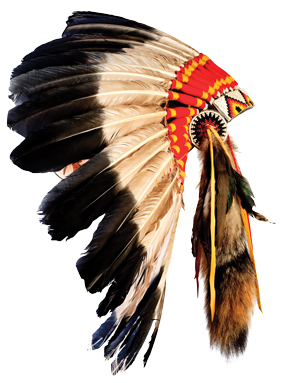
There’s a delicate line between respecting a culture and ripping it off. In his popular first-year seminar, Appropriation or Appreciation: Pop Culture and Race in Today’s Society, Dibinga helps SIS students tread that line, arming them with the tools to determine celebration from exploitation—and to engage in “courageous conversations” with those who might disagree.
Q. What is the difference between appropriation and appreciation?
A. University of Kansas professor Michelle Heffner Hayes’s definition of appropriation works best for me: taking the external trappings of cultural traditions and using them as decorations on your own history without developing mutually supporting relationships in the community that you’re taking from.
It’s the second half that’s most powerful. If the community you’re taking from benefits from what you’re doing, is that still appropriation? Look at Florida State, which has since 1947 worked with the Seminole people to ensure their representations of the tribe are respectful and dignified. Compare that to the Chicago Blackhawks or the Cleveland Indians, who changed their name to the Guardians in 2021. Those are slurs—there is no mutually supportive relationship.
Q. What is your goal for students who take your class?
A. We only really talk about cultural appropriation in terms of music, fashion, maybe food, but it’s been at the foundation of so many issues in our society, from colonialism to enslavement.
In the class, we explore the fact that art museums across the United States have thousands of pieces from African countries that those people have never profited from. We talk about how Japanese- or Brazilian-inspired restaurants, for example, are primarily owned by White people. We talk about people like Henrietta Lacks, the Black woman whose own family was destitute, even while her cancer cells were used to make billions of dollars for pharmaceutical companies.
At AU, our goal is to prepare global citizens who can engage thoughtfully and knowledgably in courageous conversations. I want to arm our students with the tools to have those conversations on a deeper level than not liking somebody’s Halloween costume.
Q. What does a courageous conversation look like?
A. When we’re talking about racism, sexism, homophobia, or cultural appropriation, definitions matter. For example, everybody [has an opinion] on who the greatest football player is—that’s a personal and emotional attachment. But once you define the criteria, there’s no debate. If it’s based on whoever scored the most points, it’s this person. If it’s based on who won the most rings, it’s that person.
That’s the problem: So many of us are so emotionally invested in these issues that we are not able to have these courageous conversations in a productive way. We have to come to an agreement on terminology before we can move forward.